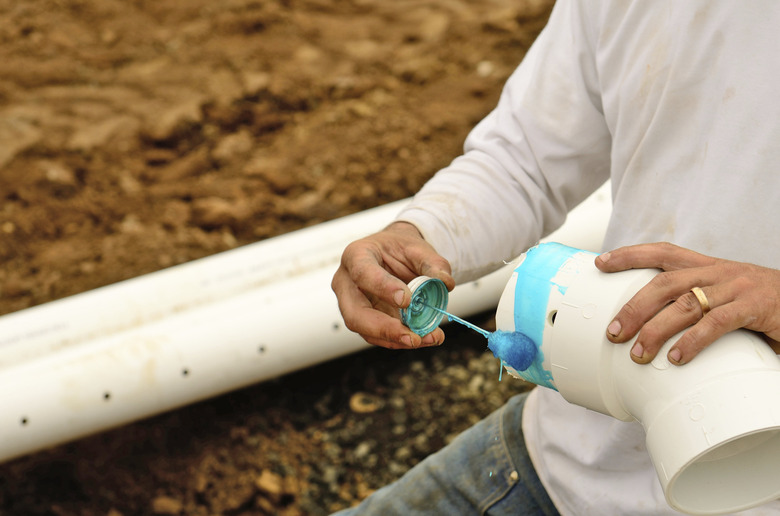What Is The Cure Time For PVC Cement?
The cement that plumbers use to join PVC pipes fuses pipes by melting the plastic, then it evaporates. Because the solvents in the cement are volatile, you must assemble pipes quickly after applying it. After assembly, it takes about two hours for the cement to cure.
Composition of PVC Cement
Composition of PVC Cement
Unlike most glues, which contain a bonding agent that must cure and harden, PVC cement consists mostly of a solvent that dissolves plastic. One popular brand consists primarily of tetrahydrofuran and methyl ethyl ketone — which are both organic solvents — and cyclohexanonean, an organic oil to texturize the mixture. Applying the cement to PVC softens the plastic. When you press two glued surfaces together they fuse into a single piece. The plastic hardens again when the solvent evaporates, which happens quickly.
Drying and Curing
Drying and Curing
When joining PVC pipes, apply an approved PVC primer to the mating surfaces of the pipe and fitting, if required for the cement you're using. Most manufacturers recommend using primer before gluing, but some cements are all-in-one products that eliminate the need for priming. Apply the cement generously to both parts. You must join the pipes before the solvent evaporates. This gives you a 15- to 20-second working time — perhaps a little longer in cool, humid weather. After joining the pipes you must hold them together for 30 seconds until the plastic hardens or they can slip apart. It takes another 15 minutes for the joint to harden to a point at which it can withstand water pressure and two hours to fully cure.
